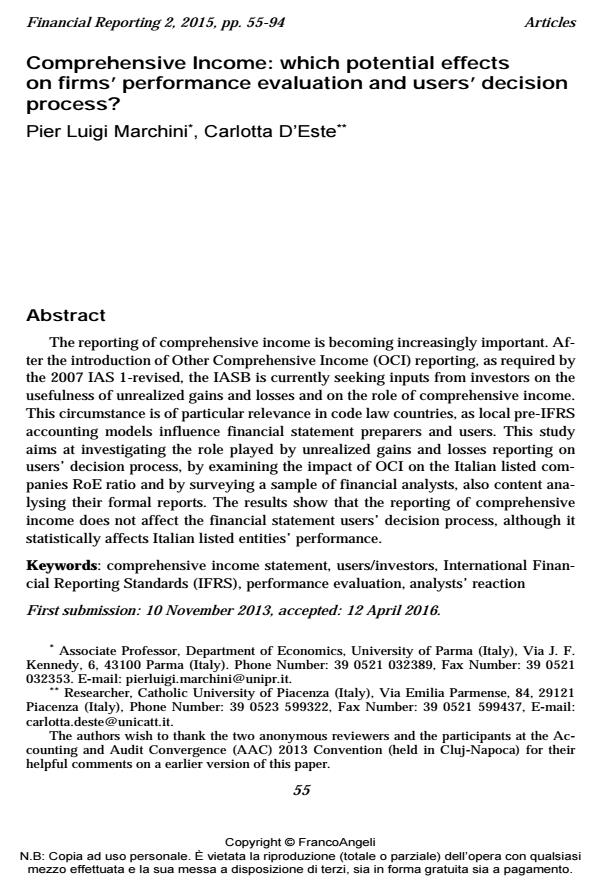Comprehensive Income: which potential effects on firms’ performance evaluation and users’ decision process?
Journal title FINANCIAL REPORTING
Author/s Pier Luigi Marchini, Carlotta D'Este
Publishing Year 2016 Issue 2015/2
Language English Pages 40 P. 55-94 File size 371 KB
DOI 10.3280/FR2015-002003
DOI is like a bar code for intellectual property: to have more infomation
click here
Below, you can see the article first page
If you want to buy this article in PDF format, you can do it, following the instructions to buy download credits

FrancoAngeli is member of Publishers International Linking Association, Inc (PILA), a not-for-profit association which run the CrossRef service enabling links to and from online scholarly content.
The reporting of comprehensive income is becoming increasingly important. After the introduction of Other Comprehensive Income (OCI) reporting, as required by the 2007 IAS 1-revised, the IASB is currently seeking inputs from investors on the usefulness of unrealized gains and losses and on the role of comprehensive income. This circumstance is of particular relevance in code law countries, as local pre-IFRS accounting models influence financial statement preparers and users. This study aims at investigating the role played by unrealized gains and losses reporting on users’ decision process, by examining the impact of OCI on the Italian listed companies RoE ratio and by surveying a sample of financial analysts, also content analysing their formal reports. The results show that the reporting of comprehensive income does not affect the financial statement users’ decision process, although it statistically affects Italian listed entities’ performance.
Keywords: Comprehensive income statement, users/investors, International Financial Reporting Standards (IFRS), performance evaluation, analysts’ reaction
Pier Luigi Marchini, Carlotta D'Este, Comprehensive Income: which potential effects on firms’ performance evaluation and users’ decision process? in "FINANCIAL REPORTING" 2/2015, pp 55-94, DOI: 10.3280/FR2015-002003